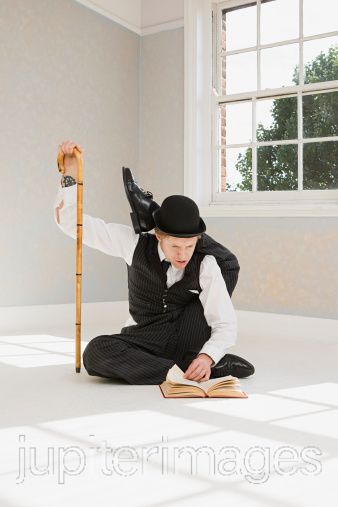Flexibility For Beginners
/ The way to achieve flexibility is to practice everyday.
The way to achieve flexibility is to practice everyday.About 10 percent of the population does not need to stretch at all because their ligaments are already soft and loose. If you are one of those people you can develop flexibility simply by getting into weird positions and comfortably hanging out and wiggling around-- while scrupulously avoiding stretching.
Flexibility is the ability to get in and out of weird positions with minimal effort. Stretching is a form of stress. There is a big difference between the two.
Most people think that the way to get flexibility is by stretching muscles, but muscles don't need to be stretched, they simply need to relax. Muscles tension is being re-established during everyday activity. Sitting in a chair drinking a cup of coffee while reading the newspaper creates tension. Not as much, and not the same tension, as driving a car in traffic, but tension never the less. Once a muscle is in a comfortable elongated position it doesn't need pressure on it, it just needs time to relax. Flexibility comes from putting muscles in elongated positions, not from stretching them.
The challenge for the beginner is to avoid developing an antagonistic relationship between regular everyday stress and daily practice. The norm out there in the world is that people take up stretching, they immediately over do it, and then after a time of intermittent struggle, they give up. Flexibility, getting in and out of weird positions with minimal effort, needs to be practiced everyday. Anything less than everyday practice will add an element of struggle. Eventually the positions will no longer feel weird, but they may always look weird.
Beginners should try to understand the difference between muscles and joints. Joints are trickier than muscles. Once muscles are loose, there is some danger that ligaments may begin to stretch. A ligament, by definition, connects a bone to another bone. Ligaments are the main limitation on range of motion in a given joint. If you stretch a ligament, it will leave you stiff for days because the muscles around it will tighten up to protect it. If you really over stretch you'll do permanent damage.
Ligaments can be lengthened safely, but this is an advanced practice. Think six hours a day, think professional contortionist.
For the rest of us, after about two years of daily flexibility practices combined with some internal practice like Tai Chi or Qigong there will be a dramatic improvement in whole body flexibility. Once this is established, overall joint quality can start to improve. The joints can become be tong, which means: all the way through. Thus whatever the qi quality of movement or stillness happens to be, it is the same on both sides of a joint and all the way through it.
_________________
One reason there is so much confusion out there about this issue is that the most flexible people in our society, the "experts," mostly started developing flexibility when they were young. If a student is under age 20 and they practice everyday, they can go ahead and stretch vigorously. High kicks, are fine too. So are intense back bends and holding low difficult stances. For a person under 20 it is important to thoroughly warm up, but trying to stretch ones body into funny shapes and extreme positions can start from day one. Warning, it is still quite possible for a young person to over stretch and to stretch unevenly, so it is really important to have a teacher regularly monitoring ones stretching. I use the age 20 somewhat arbitrarily. For some people the cut off is younger, say 17, for some it is older maybe 25. Childhood injuries can change the calculation significantly too. Teaching the young is simply a different animal than teaching full grown adults, the two populations need to be treated differently.
The young heal very fast, when I was young I could pull or strain muscles several days in a row and be fine in a couple of days. At 43 if I get a minor muscle strain it needs immediate care, rest and liniments. A major muscle strain and I can be injured for weeks (knock on wood, I haven't had one in over 3 years). Today, when I move it may look wild and extreme to the untrained eye, but in reality I'm very conservative.
My secret is: practice everyday.
